
THOMSON REUTERS INSTITUTE
2024 Law Firm
Oce Attendance
Policies
Legal professionals and law firms embracing
a new standard of hybrid work

Law Firm Oce Attendance Policies Report 2024 2
© Thomson Reuters 2024
Executive summary
In the grand tradition of navigating societal norms, the new realities of return-to-oce strategies
and specially, of oce attendance policies present the modern law firm with a labyrinth of
expectations versus reality. Questions about how many days lawyers should be in the oce,
how flexible these policies should be, and to what degree they should be enforced have sparked
intense debates. For all the initial
skepticism and ongoing discourse,
however, a fittingly unexpected
reality has emerged: legal
professionals and law firm leaders
have embraced their new oce
attendance policies with
startling enthusiasm.
It’s a rather shocking turnaround, given the vehemence which perforated the discussion of oce
attendance early on in the post-pandemic world.
Many lawyers initially were worried that firms would use a heavy hand to pull legal professionals
back to the old world of in-oce working five days per week. However, the vast majority of
law firms are instead employing a hybrid approach to oce attendance with a high degree
of flexibility, a choice that has been met with remarkable satisfaction from lawyers. Indeed,
rather than rejecting the policies, law firm professionals appear willing to go beyond their firms’
requirements. Enforcement of oce attendance policies has also been generally reported as lax,
with aggressive enforcement nearly unseen.
This has resulted in a majority of lawyers who are outright supportive of their firm’s policies and
a vast super-majority
1
that are at least neutral. For all the surprising support from lawyers and
paralegals, the most enthusiastic supporters of the new oce policies are the firms’ C-suite and
executives, a super-majority of whom said they were satisfied with the policies.
By examining the small minority of lawyers who are dissatisfied with their firms’ current
arrangement, it’s possible to see where the overall industry’s success comes from. Unsatisfied
legal professionals reported being in the oce more than the average respondent and operated
under notably less flexible attendance policies. These lawyers were extraordinary for how
vehement their rejection of these policies was, to the point where a large proportion of them
were unsure if they would be at their firm in six months. Paralegals and other non-billing legal
professionals also faced challenges, in which their attendance was much more strictly required
and enforced, with a notable polarizing result in satisfaction.
Despite the overall success and satisfaction with hybrid work policies, it does seem like some
of the anticipated benefits have failed to materialize. If firms expected any kind of productivity
boost from their lawyer’s being in the oce, the evidence is mixed at best for any kind of
increase resulting from higher in-oce attendance. More glaring seems to be a disconnect
between the intentions of the policy and the on-ground reality when it comes to collaboration
and mentorship. While associates are required to be in the oce more often to provide
mentoring opportunities from partners, those same partners seem to be enjoying far greater
freedom. The result is that, despite all the eort to bring legal professionals back to the oce,
collaboration hasn’t improved from the work-from-home era.
Legal professionals and law firm
leaders have embraced their new
oce attendance policies with
startling enthusiasm.
1 In this context, a super-majority is defined as a majority consisting of 66% or more of the group’s total membership.
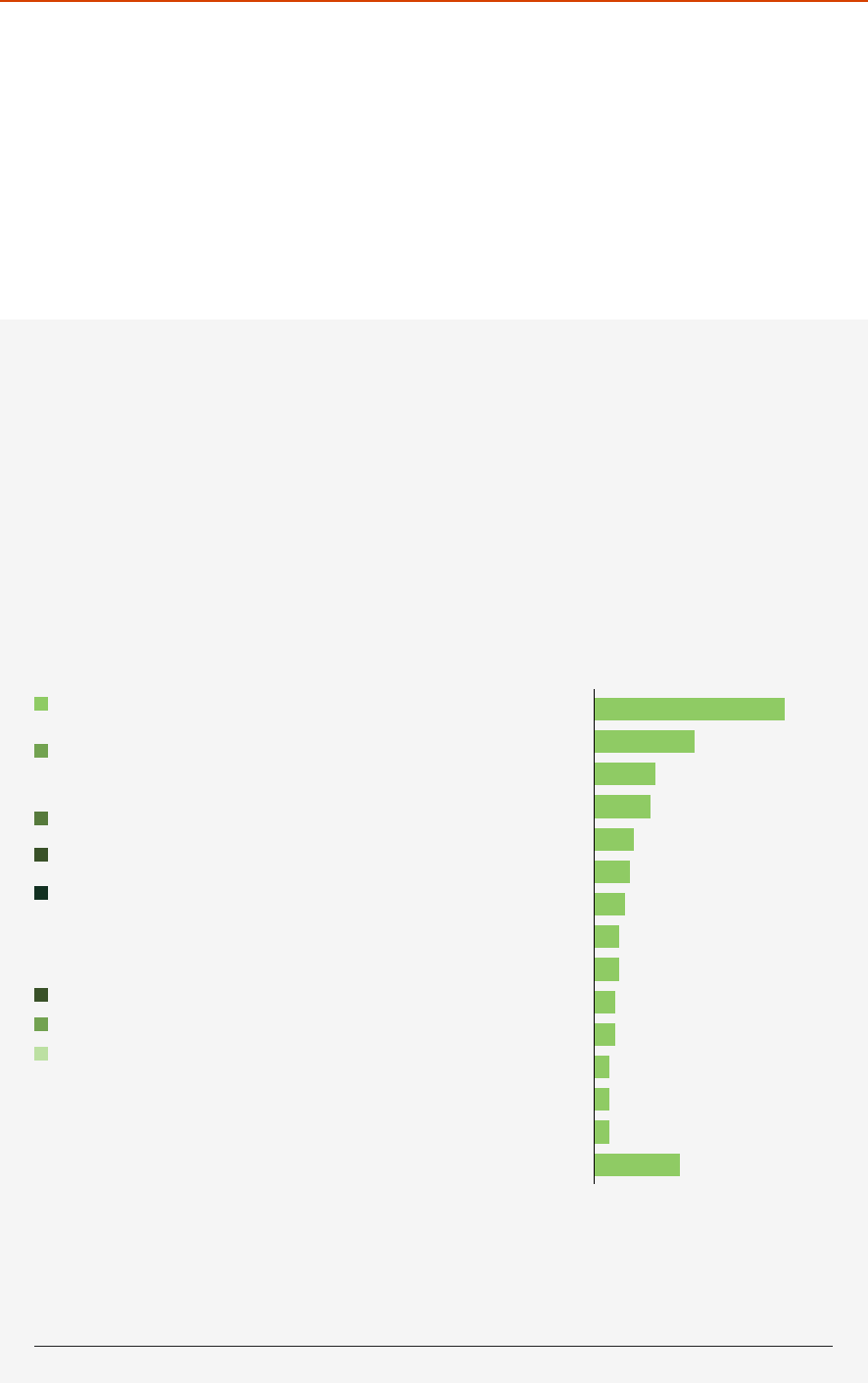
Law Firm Oce Attendance Policies Report 2024 3
© Thomson Reuters 2024
The law firms’ journey back into the oce has been defiant of expectations and its successes so
far have been a lesson in flexibility and respect. Even in the cases where dissatisfaction reigns,
it seems to be in the places where the overall policy of trust and understanding has failed to
manifest. In a world where the relationship between lawyer and firm is set to face startlingly new
complexities, whether from the rise of generative artificial intelligence (GenAI); environmental,
social, and governance (ESG) issues; or an increasingly unstable world, the surprisingly positive
results of this first dance should not go ignored, nor should its key lessons.
Methodology
The data from this report comes from a survey conducted by the Thomson Reuters
Institute from December 2023 to January 2024. Invitations were sent to a list of verified
legal professionals working at large US law firms.
2
In total, 350 responses were collected
from 105 unique large law firms. Almost all (97%) of all respondents were full time
workers, with 73% of respondents representing various lawyer classes, 16% representing
paralegals, and 11% representing C-Suite or executive leadership. The sample also
included a mix of practice areas.
Litigation
Corporate - General
Real Estate
Corporate - M&A
Patent Litigation
Labor & Employment
Patent Prosecution
Copyright & Trademarks
Trusts & Estates
Regulatory
Tax
Bankruptcy
Product Liability
Environmental
Other
Practice areaRole/job title
Job status
38%
20%
12%
11%
8%
7%
6%
5%
5%
4%
4%
3%
3%
3%
17%
2 Large Law Firms in this case are those that employ 30 or more full-time lawyers.
C-suite/executive
leadership
Full-time
Partner/
managing
partner
Part-time
Associate
Paralegal
Lawyer
Other
++++
+2+1
11%
1%
16%
97%
16%
32%
24%
2%
Further data, provided by Thomson Reuters Financial Insights, is based on reported
results from 179 US-based law firms, including 48 Am Law 100 firms, 49 Am Law Second
Hundred firms, and 82 Midsize law firms (US-based firms ranked outside of the Am Law
Second Hundred).
FIGURE 1:
Sample coverage
Source: Thomson Reuters 2024

Law Firm Oce Attendance Policies Report 2024 4
© Thomson Reuters 2024
Satisfaction with oce
attendance policies
The COVID-19 pandemic ushered in an unprecedented transition from the in-oce working
environment that legal professionals have experienced for centuries, moving them to a relatively
unexplored experience of working from home, a dynamic that extended for years longer than
many initially expected. On the positive side, the work-from-home era enabled lawyers and
paralegals to discover work-life balance improvements on an incredible scale. For example,
time normally spent commuting was now free while lawyers were able to spend more time
with family, perusing hobbies, or simply finding more comfortable ways to work from home.
However, the shift was not without its challenges. The lack of in-person interaction strained
professional relationships and connections within many firms, hindered the mentoring of junior
sta, and complicated the nuances of team dynamics. For many, the blurring lines between
work and home life led to burnout and mental health struggles, as the absence of physical
separation often made it dicult to disconnect from work. Additionally, while some lawyers
found work from home liberating, others found operating outside an oce environment dicult.
Firms were also faced with the cost of maintaining exceedingly expensive yet hardly used
premium oce space.
With the worst of the pandemic passing, it became essentially inevitable that firms would, in
some fashion, call their people back to the oce. Media and professional channels have been
filled with instances of businesses calling employees back to the oce for full five-day weeks
with aggressive enforcement, most notably in professional services businesses like banking
and financing.
For law firms, the task of bringing their lawyers and paralegals back to the oce was a task
fraught with potential backlash. Legal professionals had become accustomed to the advantages
in work-life balance that the work-from-home period granted. The pandemic’s broader impact
on people’s evaluation of their careers and the importance of a personal life set up a clash that’s
already being seen in other industries.
FIGURE 2:
Satisfaction with firms’ attendance policy
Source: Thomson Reuters 2024
Satisfied
Neutral
Not satisfied
++
13%
29% 57%
Category Score
Satisfied 10 to 8
Neutral 7 to 4
Not satisfied 3 to 1
10 9 8 7 6 5 4 3 2 1
Not satisfied
at all
Extremely
satisfied

Law Firm Oce Attendance Policies Report 2024 5
© Thomson Reuters 2024
Interestingly, however, that backlash seems to have failed to materialize in the legal industry,
as large law firms broadly adopted hybrid oce attendance policies with high degrees of
flexibility and light-touch enforcement. This has resulted in high degrees of satisfaction from
legal professionals.
We asked legal professionals to rate their firms’ attendance policies on a scale of 1 to 10. More
than half (57%) reported satisfaction with their firms’ oce attendance policy, rating it 8 or
higher. A further 29% said they were at least neutral (rating the policies 4 to 7); and only 13% of
those surveyed reported outright dissatisfaction with their firms’ policies (rating them 3 or lower).
Fears of firms’ adopting en masse five-day-a-week mandates thus far seem to have been
unfounded, with lawyers having instead discovered that the gains in work-life balance attained
in the work-from-home era have been upheld. While the narrative that firms gave in to lawyers
demands would be an easy takeaway from this finding, another data point suggests a far more
interesting possibility.
With how happy lawyers are and how much the policies seem to tip in their favor, one may
presume that law firm leaders have had to unhappily capitulate to their lawyers under pressure
of an uprising. After all, in many cases it seems like lawyers got everything they wanted: A hybrid
work option with plenty of time at home, which is highly flexible yet lightly enforced. Regarding
other findings in this report relating to productivity and collaboration, one would assume that law
firm leaders are more begrudging in their satisfaction on these policies. In truth, it’s the opposite.
While all title classes were happy with their firms’ attendance policies, none were as happy as
the C-suite and executive leadership, who had an average of 66% in solid satisfaction. In other
words, nobody is more pleased with the new hybrid reality than the bosses.
A flexible, hybrid approach
Flexible attendance policies are one example of how firms have found a compromise between
the traditional model of in-oce working and the more recent trend of legal professionals
wanting to work remotely.
FIGURE 3:
Oce required days vs. attended days
Source: Thomson Reuters 2024
60%
50%
40%
30%
20%
10%
0%
0 Days 1 Day 2 Days 3 Days 4 Days 5 Days
Required days in oce Average attended days in oce
10%
15%
5%
4%
23% 23% 23%
56%
9%
6%

Law Firm Oce Attendance Policies Report 2024 6
© Thomson Reuters 2024
More than half of respondents (56%) report their firm has established a policy that requires
lawyers to come in at least three days per week, with 85% reporting a requirement of less than
four days per week. Regarding the flexibility of this requirement, 64% report that the overall
policy is flexible, allowing sta to largely choose which days they are in the oce.
Whereas many companies are struggling to get employees to reach minimum attendance
policies, it seems that law firms have a large group of legal professionals that go beyond the
minimum requirement. While a majority of law firms require at least three working days in
the oce, a surprising number of lawyers report actually being in the oce more days than
are required. While only 15% of law firms require more than three days in the oce, 46% of
respondents say they are showing up to the oce four or more days per week.
As for the much discussed firms which require their lawyers to be in the oce five days
per week, only 6% of respondents stated that this was their firm’s policy. If our sample is
representative, it seems that the vast bulk of of the legal industry has rejected such measures.
FIGURE 4:
Flexibility of oce attendance policy (by role)
Source: Thomson Reuters 2024
C-suite/executive leadership Partner/managing partner Lawyer Associate Paralegal
Flexible
Neutral
Rigid
66%
66%
60%
64%
63%
34%
32%
17%
33%
35%
0%
1%
5%
5%
19%
Category Score
Flexible 10 to 8
Neutral 7 to 4
Rigid 3 to 1
10 9 8 7 6 5 4 3 2 1
Very rigid
Very flexible
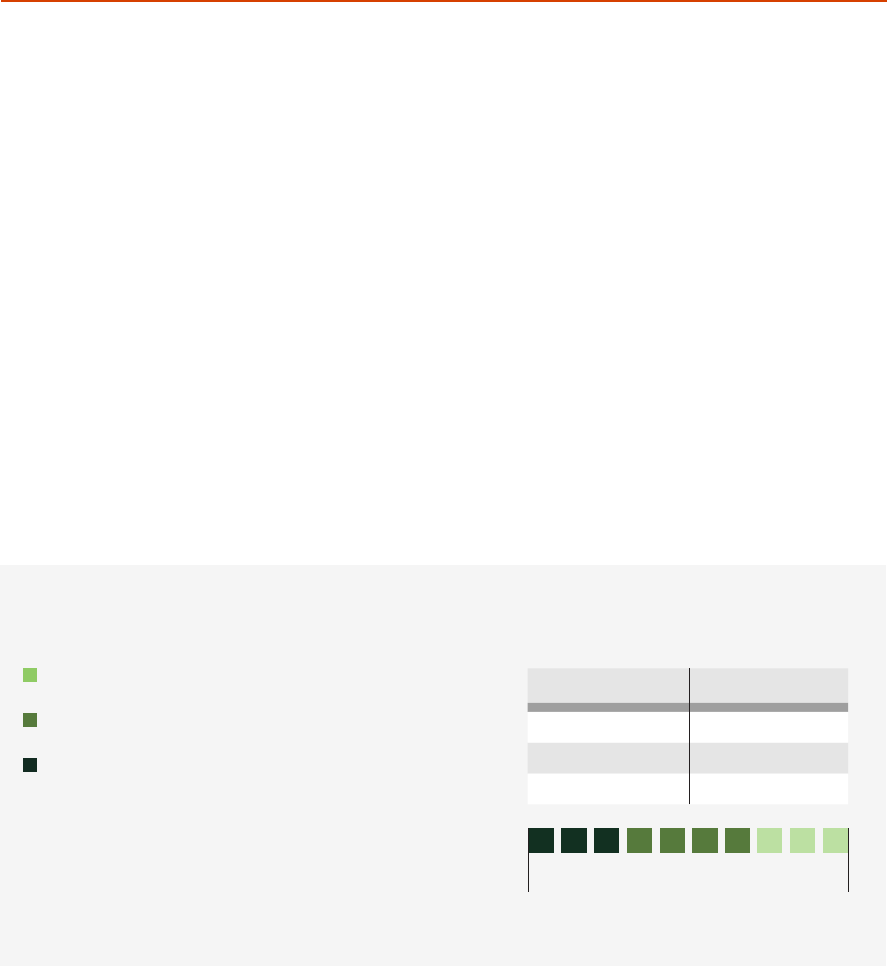
Law Firm Oce Attendance Policies Report 2024 7
© Thomson Reuters 2024
A policy that allows professionals to choose three days a week to attend the oce provides
some autonomy and flexibility, while also creating opportunities for regular face-to-face
interactions with colleagues and clients. This hybrid approach seems to have struck a balance
between the personal and business needs of legal professionals, as reflected in the high
levels of satisfaction and neutrality reported in the survey. The policy also demonstrates firms’
willingness to accept and accommodate the preferences of their sta, rather than imposing a
rigid and uniform rule.
The role (or lack thereof) of enforcement
In returning to the oce, there was understandable trepidation on the side of legal professionals
beyond the return itself. The brief period in 2021 and early-2022 in which the labor economics of
the large law firm industry swung in favor of legal professionals has faded, and leverage again
seems in the hands of firms. Late 2023 saw Am Law 100 firms severely restrict summer hiring
and many top-list law firms publicly let lawyers go in the last few months. A reality in which firms
would aggressively enforce their return-to-oce plans seemed not out of the question.
FIGURE 5:
Enforcement level of oce attendance policy
Source: Thomson Reuters 2024
Passive
Moderate
Aggressive
++6
5%
41%
53%
Category Score
Passive 3 to 1
Moderate 7 to 4
Aggressive 10 to 8
10 9 8 7 6 5 4 3 2 1
Very
passive
Very
aggressive
Yet survey respondents overwhelmingly reported only passive to moderate enforcement of
attendance policies, allowing many professionals to experiment and discover their optimal work
mode without facing a rigid schedule. Enforcement from firms regarding their oce policies has
been lax, according to our survey, with 53% of legal professionals reporting passive enforcement
and 41% reporting moderate enforcement.
For those seeking a more advanced statistical analysis, a comparative regression analysis
of the impact of flexibility and enforcement found that both aspects strongly aected legal
professionals’ opinion of their firm’s oce policy. However, a lawyer’s score of flexibility more
fully explained their overall approval of the policy, far more than even firms’ required number of
days in the oce. Thus it seems that lawyers are truly reacting to the flexibility and enforcement
of the policy rather than just the number of days they are required to be in the oce.
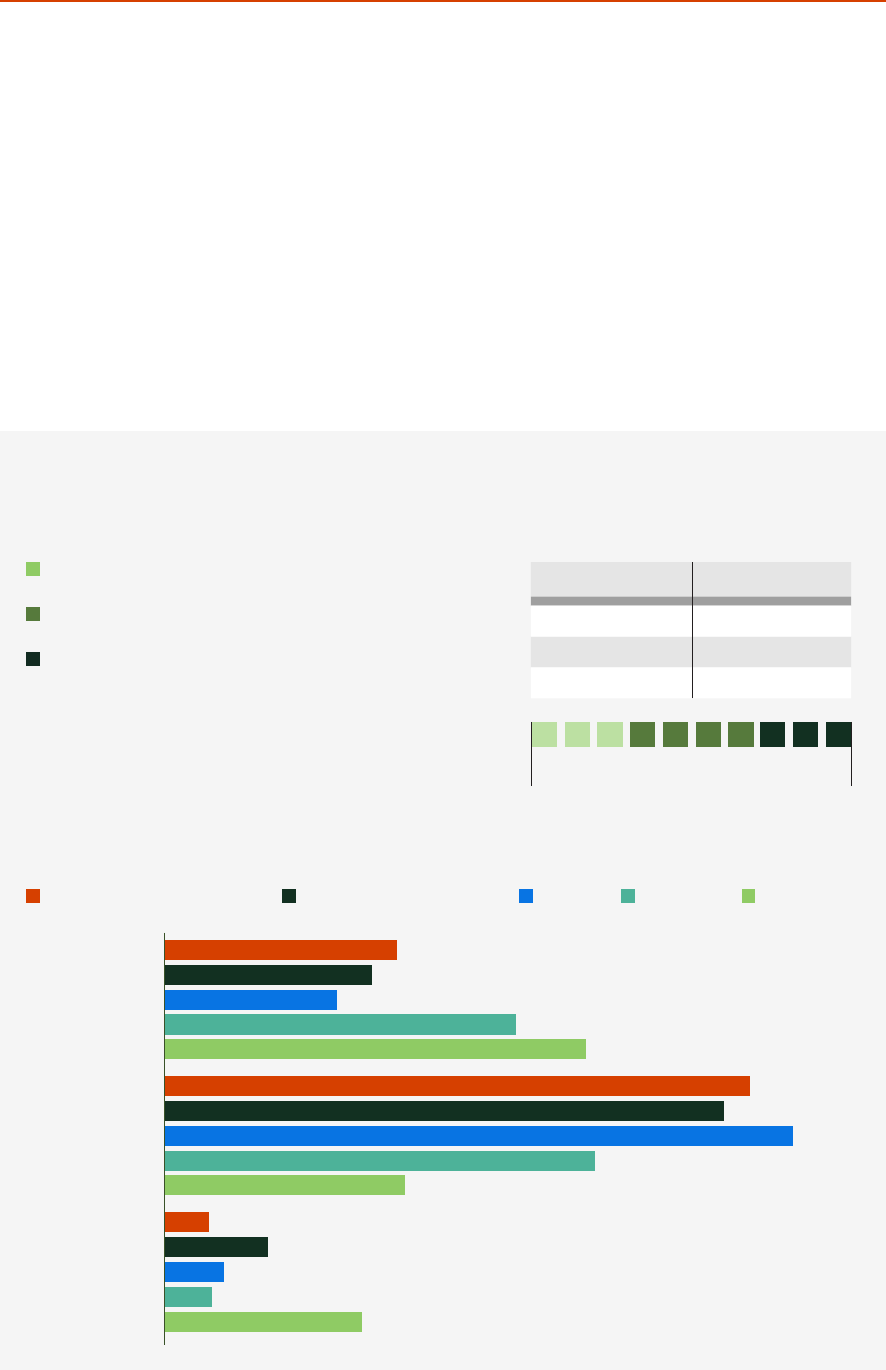
Law Firm Oce Attendance Policies Report 2024 8
© Thomson Reuters 2024
Impact on overall job satisfaction
When asked specifically how their firms’ oce attendance policies impacted their satisfaction,
lawyers were at least neutral if not upbeat about a policy topic that has created distinct heat
across the professional landscape. An overwhelming majority of respondents (89%) reported
that their overall job satisfaction had either stayed neutral or improved because of the oce
attendance policy at their law firm. Unlike lawyers’ unexpected enthusiasm for the policies
themselves, the impact on overall job satisfaction was majority neutral, although there was a
notable tilt towards the positive. Only 11% of lawyers saw their overall job satisfaction drop as
a result of their firms’ policies, a number that was close to the 13% which disapproved of their
firms’ oce attendance policies specifically.
FIGURE 6:
Oce attendance policy aecting job satisfaction
Source: Thomson Reuters 2024
C-suite/executive leadership Partner/managing partner Lawyer Associate Paralegal
Increased
Stayed the same
Decreased
27%
24%
20%
49%
41%
68%
50%
28%
65%
73%
5%
12%
7%
9%
23%
Increased
Stayed the same
Decreased
++
11%
56%
33%
Category Score
Increased 10 to 8
Stayed the same 7 to 4
Decreased 3 to 1
10 9 8 7 6 5 4 3 2 1
Decreased a
great deal
Increased a
great deal
Total respondents
Total respondents by role

Law Firm Oce Attendance Policies Report 2024 9
© Thomson Reuters 2024
Among those respondents with the most positive view of oce attendance policies was law firm
associates, 41% of whom reported an increase in overall job satisfaction compared to the overall
average of 33%. This may be unsurprising given that associates have the highest potential gains
from an in-oce policy that oers them opportunities to be mentored and earn work, yet also
provides them with a life-balance according to their own needs.
Paralegals presented a more complex reaction. On one hand, this title class was one of the most
enthusiastic respondents, with 49% reporting an increase in job satisfaction as a result of their
firms’ oce attendance policy. On the other hand, paralegals were more than twice as likely to
see a decrease in job satisfaction, with nearly a quarter of respondents being less enthusiastic
toward their job overall as a direct result of these policies.
Given the general success and approval that return to oce generated, we decided that the
best way to figure out what was and was not working was to examine the rare instances in which
dissatisfaction manifested among legal professionals.
As in law, it’s the details that matter when it comes to oce policies.
Law firms seeking to gauge the success of their own policies vs. those of the industry
need to go beyond merely comparing their required working days to the overall average.
As shown in the report, factors such as the flexibility of the policy and the level of the
enforcement, have a major impact on the policy’s success. Where there has been a great
deal of argument over the number of days a legal professional should be in the oce,
firm leaders setting policy may be missing the forest for the trees if they do not also take
into account these further concerns.
The TR Institute’s View:

Law Firm Oce Attendance Policies Report 2024 10
© Thomson Reuters 2024
Examining unsatisfied
legal professionals
The fact that law firms have gotten as close as they have to such universal acceptance of
their oce attendance policies is one of the most striking findings of the survey. Of the overall
sample, only 13% reported being unsatisfied with their specific law firm’s oce policy. By
analyzing this group (referred to going forward as the Unsatisfied
3
group) we found a few striking
dierences between them and the majority Satisfied
4
group.
The first was that the Unsatisfied legal professionals reported that their firms are far less flexible
than the average law firm, with only 28% reporting that their firm is flexible compared to the
average score of 64%. The median flexibility score for this group was also two rating points
lower than the overall median and three points lower than the Satisfied group.
This lack of flexibility seemed to stem, in some ways, from a perception that these legal
professionals were working more from the oce than their counterparts. Whereas nearly
50% of all legal professionals surveyed said that they were in the oce a similar amount of
time compared to their colleagues, almost half of Unsatisfied professionals said that they
were in the oce more than their colleagues. This data is somewhat supported by the
attendance responses. The Unsatisfied group reported an average days-in-the-oce
requirement of 3.1, while the Satisfied subset reported 2.6 (compared to the overall average
of 2.7 days of in-oce attendance).
3 The Unsatisfied group is formally defined as the 13% of legal professionals who gave a score of between 1 – Not Satisfied At All, and a 3 when asked “How
satisfied are you with your firm’s current Oce Attendance policy?”
4 The Satisfied group is formally defined as the 57% of legal professionals who gave a score of between 10 – Extremely Satisfied, and a 7 when asked “How
satisfied are you with your firm’s current Oce Attendance policy?”
FIGURE 7:
The unsatisfied professional
Source: Thomson Reuters 2024
More than I am
Similar number of days a week
Less than I am
49%
36%
37%
45%
13%
19%
Oce attendance compared to colleagues
% of total respondents % of unsatisfied respondents
The dichotomy between dissatisfaction and strict attendance policies was also despite both
Satisfied and Unsatisfied lawyers reporting a similar level of enforcement from their firm. It thus
seems that their dissatisfaction is not the consequences of the oce attendance policies to
which lawyers are reacting but rather the inflexible base of the policy itself.

Law Firm Oce Attendance Policies Report 2024 11
© Thomson Reuters 2024
The Paralegal – an inequitable polarization
One title that notably deviated from the norms of near-universal flexibility and acceptance
regarding RTO policies was paralegals and that does seem to be somewhat by intention. Among
paralegals, 64% reported that their firms had dierent oce attendance policies for lawyers
and non-billable professionals, with no indications that paralegals were getting the easier,
softer policies.
Paralegals were four times as likely to report their oce attendance policy as being rigid and they
were also half as likely to report a neutral level of flexibility. In other words, paralegals were given
fewer options regarding their oce experience compared to lawyers and executives. In addition,
paralegals were two and a half times more likely to classify enforcement as aggressive and two-
thirds as likely to report passive enforcement, a distinct detachment from the norm for lawyers.
This tale was born out in the open answers submitted by both paralegals and lawyers. These
open-ended responses pointed towards paralegals and non-billing professions often having less
flexibility in their work arrangements, being required to be in the oce more and being under far
greater scrutiny than their lawyer counterparts.
There did seem to be a positive impact on the productivity front, however compared to the average
lawyer. Paralegals were far more likely to report a net increase in productivity as a result of these
policies, with 42% reporting increased productivity.
However, that bright spot may be oset by the potential for turnover. While half of paralegals
reported that they saw a net increase in job satisfaction, 23% reported a lower overall job
satisfaction as a result. While 23% is, indeed, a minority, it is double the level of dissatisfaction
reported from associates, lawyers, and partners.
Source: Thomson Reuters 2024
Total respondents Paralegal
FIGURE 8:
Paralegal’s flexibility and job satisfaction ratings
“ Support sta
generally need
to get special
permission to
work from home.”
-Associate
“ In practice, enforced
more strictly
against non-billing
professionals,
particularly legal
assistants.”
-Associate
“ Some non-billing
are required to
be in five days a
week (e.g., records
department).”
-Partner/Managing
Partner
“ Sta are required
to be in the
oce more
than attorneys.”
-C-Suite/Executive
Leadership
Flexible
Neutral
Rigid
Increased
Stayed the
same
Decreased
30%
56%
17%
28%
6%
11%
19%
23%
64%
33%
64%
49%
How paralegals rate flexibility of oce
attendance policy
How paralegals rate how oce attendance
policy’s aected their job satisfaction
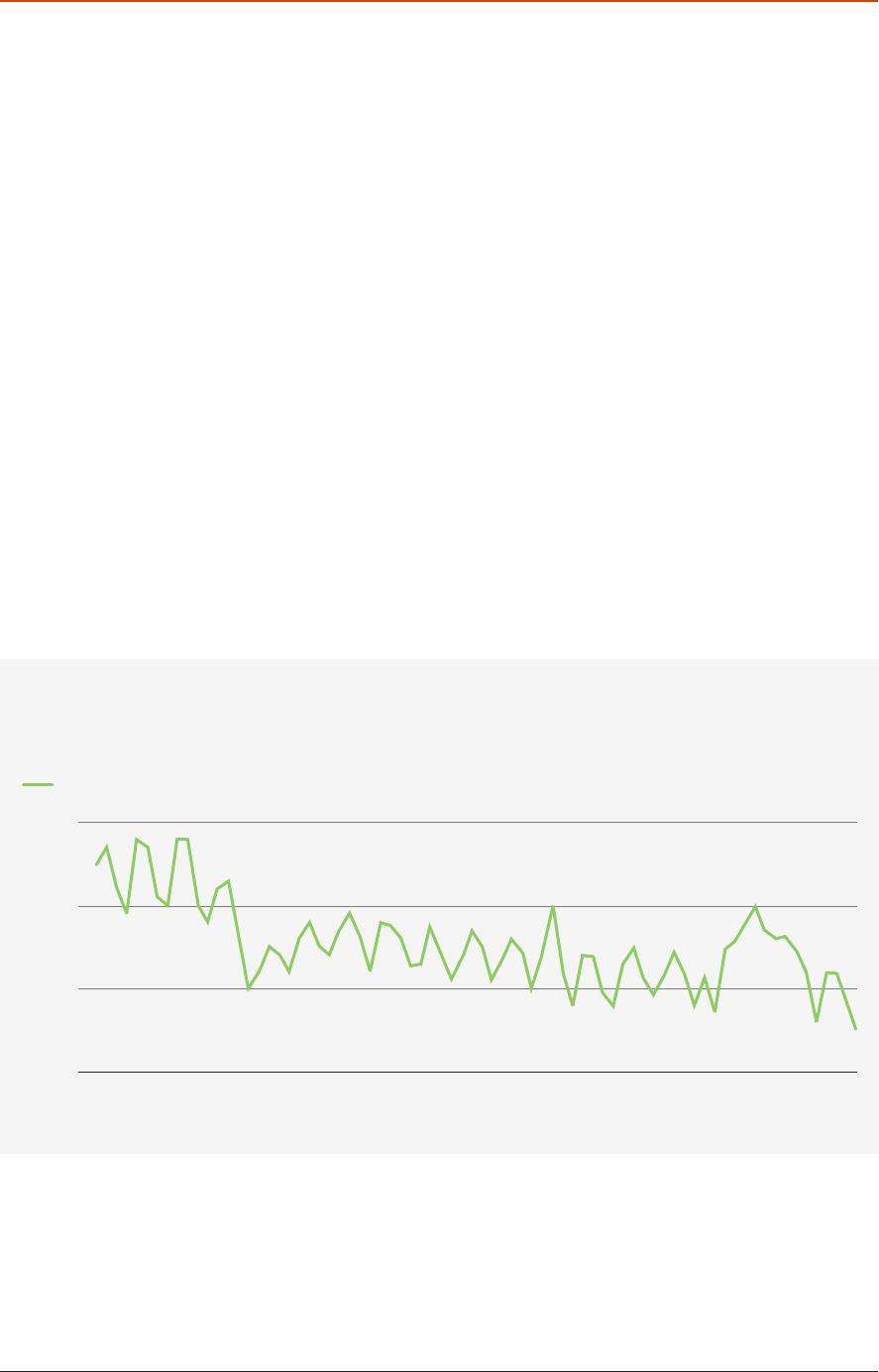
Law Firm Oce Attendance Policies Report 2024 12
© Thomson Reuters 2024
Impact on overall firm performance
While overall satisfaction of lawyers was a pleasant surprise and though some lawyers have
proven to be dissatisfied, it certainly seems like the dissatisfaction stems from policies which
dier from the successful blueprint the vast majority of large law firms have adopted.
Yet to paint firms’ return-to-oce as a smooth trip to success would be an incomplete tale. For
a more complete picture, firms must look at why the anticipated improvements that their oce
attendance policies were supposed to bring to productivity have not fully materialized, casting a
shadow over an otherwise bright outlook.
Clouded findings around productivity
Since the onset of the pandemic, productivity in the average law firm has experienced a
downturn, with an average yearly decline in hours per lawyer of 1.6% per year since 2020. As
reported in the Thomson Reuters Institute’s Law Firm Financial Index for the fourth quarter of
2023,
5
productivity declines are nothing new for law firms. The period from 2005 to the end of
2019 averaged a yearly decline of 0.6%, with the current downturn seeing a far greater pace. As
a result, the overall hours worked per lawyer have reached an all-time low.
5 https://www.thomsonreuters.com/en-us/posts/legal/l-q4-2023-improving-fortunes/
FIGURE 9:
Hours worked per lawyer
Source: Thomson Reuters 2024
140
130
120
110
2005 ’06 ’07 ’0 8 ’09 ’ 10 ’ 11 ’ 12 ’13 ’14 ’ 15 ’16 ’ 17 ’ 18 ’ 19 ’20 ’2 1 ’ 22 ’23
All lawyers
Hours worked per month
115
We cannot assert a strict causal relationship between firms’ oce policies and the overall
productivity downturns as there are many other factors at play. Even if returning to their oces
did improve the productivity of lawyers and non-billing professionals over the last year, other
developments such as technological enhancements that automated previously billable hours
and over-hiring relative to law firm demand could be major factors that override a positive impact
from in-oce attendance.

Law Firm Oce Attendance Policies Report 2024 13
© Thomson Reuters 2024
What is clear from the data, however, is that the push to get lawyers to return to in-oce work
has not resulted in any significant improvement in per-lawyer productivity.
Two-thirds of those surveyed reported that their oce attendance policy has had no eect
on their productivity, and only 26% report any improvement. Given the diculty in self-grading
productivity, this is not necessarily a strong result.
We did endeavor to divine actual increases in productivity that may have resulted from
oce attendance policies, however, the results were unsatisfactory. The data samples we
analyzed included:
•
respondents who claimed to be more productive
•
lawyers who spent more time in the oce than their counterparts
•
Satisfied and Unsatisfied lawyers
•
respondents from firms participating in Thomson Reuters Financial Insights.
Even when controlled for practice, title, and other factors, all results came back as inconclusive
or insubstantial. If there is a productivity enhancement from having lawyers back in the oce, it
may be too small for us to isolate or detect.
FIGURE 10:
Impact on productivity and collaboration
Source: Thomson Reuters 2024
Increased
Stayed
the same
Decreased
26%
67%
6%
15%
72%
13%
Oce attendance policy aecting your
productivity & collaboration
Productivity
Collaboration
Category Score
Increased 10 to 8
Stayed the same 7 to 4
Decreased 3 to 1
10 9 8 7 6 5 4 3 2 1
Decreased a
great deal
Increased a
great deal
A collaboration problem
In theory, increasing collaboration should have been a much easier achievement as legal
professionals returned to the oce, especially as the headwinds of the long-term decline in
productivity wouldn’t have been as much of a detrimental factor. However, our findings indicate
that collaboration also has also not improved compared to the work-from-home era, with 72%
of respondents saying collaboration with colleagues has remained the same with few outliers to
either side.
While collaboration is a dicult phenomenon to statistically analyze, the open-ended responses
seem to point in a particular direction. Multiple respondents noted that firms more often allowed
more senior lawyers to work from home additional days, while associates (especially the most
junior) were required to be in the oce more. Many respondents (especially those from the

Law Firm Oce Attendance Policies Report 2024 14
© Thomson Reuters 2024
C-Suite and executive leadership
positions) suggest that the intention
behind such policies for associates
was to foster mentorship and
collaboration opportunities. The
reality, however, appears to diverge
from these objectives.
The feedback clearly highlights a significant discrepancy regarding the presence of partners in
the oce: it suggests a lack of visibility, despite attendance data indicating otherwise, hinting
that partners may be present but not accessible to associates. Additionally, it is noted, albeit
less surprisingly, that partners appear to enjoy more privileges than individuals with other titles.
Just 1% of partners reported that their oce attendance policy was rigid, compared to 5% of
associates and 19% of paralegals. Partners also reported far more passive enforcement of their
attendance requirements compared to other titles and noted that other colleagues were in the
oce far less than they were. Further, while the number of lawyers, associates, and paralegals
who reported rigid enforcement were a small minority of respondents, partners experiencing
such strict enforcement were eectively non-existent. Open ended responses likewise showed
that partners and senior classes were given far greater latitude than other titles.
It seems that there is a paradox that many firms may have inadvertently inserted into their oce
attendance policies. These policies mandate that associates spend more time in the oce than
the average lawyer to foster learning and facilitate mentorship opportunities. However, partners,
who are the very individuals expected to mentor these associates, are aorded significantly
more flexibility to work from home than the average lawyer. In essence, the students are required
to be in school, but the teachers aren’t in the classroom.
This shortfall undermines one of the primary objectives of encouraging oce attendance: to re-
establish the communication and connections that were weakened during the work-from-home
shift prompted by the pandemic. This failure to return to previous levels not only impacts the
professional development of associates but also hints at a broader issue of accountability and
equitable treatment within the firm’s structure.
It seems that there is a paradox
that many firms may have
inadvertently inserted into their
oce attendance policies.
Partner attendance in the oce verbatim responses
“ Partners do not have the
same expectations and are
in the oce as they need or
see fit.”
-Associate, Satisfied
“ Does not apply to partners,
apparently.”
-Lawyer, Unsatisfied
“ Many partners never come
in the oce and appear
to not have any in-oce
expectation.”
-Associate, Neutral
“ Non-partners are expected to be in the oce and have been told it will be part of the review
cycle, and the justification is allegedly for enhanced mentorship, but partners aren’t showing
up any more often and there has been no increase (and actually a bit of a decrease) in
interactions with partners since the policy was announced, and there’s no mechanism to hold
partners accountable to the supposed ‘expectation.’”
-Associate, Unsatisfied
“ Associates must be in the oce at least 3 days a week to receive a bonus whereas partners can
get their bonuses without meeting that requirement.”
-Partner/Managing Partner, Unsatisfied

Law Firm Oce Attendance Policies Report 2024 15
© Thomson Reuters 2024
A warning regarding retention
It may be somewhat logical for law firms to conclude that the hybrid model, for all of its
surprising popularity, is a failure if it itself fails to improve collaboration and productivity.
We would caution against this conclusion for two key reasons.
First, there may be other solutions to firms’ productivity and collaborations issues which
could be more eective. Automation technologies from mundane record-keeping to the most
advanced GenAI products mean that, while lawyers may be billing fewer hours, they can add
more actual value into each working hour.
Collaboration, while again a more complicated and nuanced topic, could also see advantages
from eorts that are more simple, relative to a full-time oce presence requirement. Workshops,
coaching, even something as modest as a firm-provided lunch on a scheduled basis could be
enough to start rebuilding communication and cooperation. If there were half the discussion in
the legal industry about a return to collaboration as there has been about a return to oce, then
solutions will no doubt avail themselves.
Those still looking to oce attendance
policies as an answer may find one
key area needing improvement. More
than three-quarters (78%) of legal
professionals stated that their firm didn’t
have dierent oce attendance policies
by practice group. By allowing greater
flexibility at the practice level, firms
may give the space for their partners
and associates to learn to work and
collaborate together.
A second reason to caution against imposing more restrictive policies is that, even if a harsher
in-oce policies do increase productivity and collaboration — and we found no adequate
evidence that they do — the proverbial juice may simply not be worth the squeeze. For that, we
need to look at the impact of the current oce policies on retention.
It may be unsurprising, given the high overall satisfaction of legal professionals with their
firms’ oce attendance policies, that the overall impact on retention was also high. Among
respondents, 84% stated that they were unlikely to leave their firm in the next six months, with
three-quarters of them saying they were highly unlikely to leave. This ratio is similar to how
lawyers said they felt their oce attendance policies aected their overall job satisfaction.
What was far more notable was how starkly this perception shifted when we once again looked
at those lawyers in the Unsatisfied category, or those who were sour on their firms’ oce
attendance requirements. Whereas only 16% of total legal professionals were at least unsure
if they would move firms in the next six months, the Unsatisfied group was nearly three-times
more likely to fall into the unsure category.
If there were half the discussion
in the legal industry about a
return to collaboration as there
has been about a return to
oce, then solutions will no
doubt avail themselves.
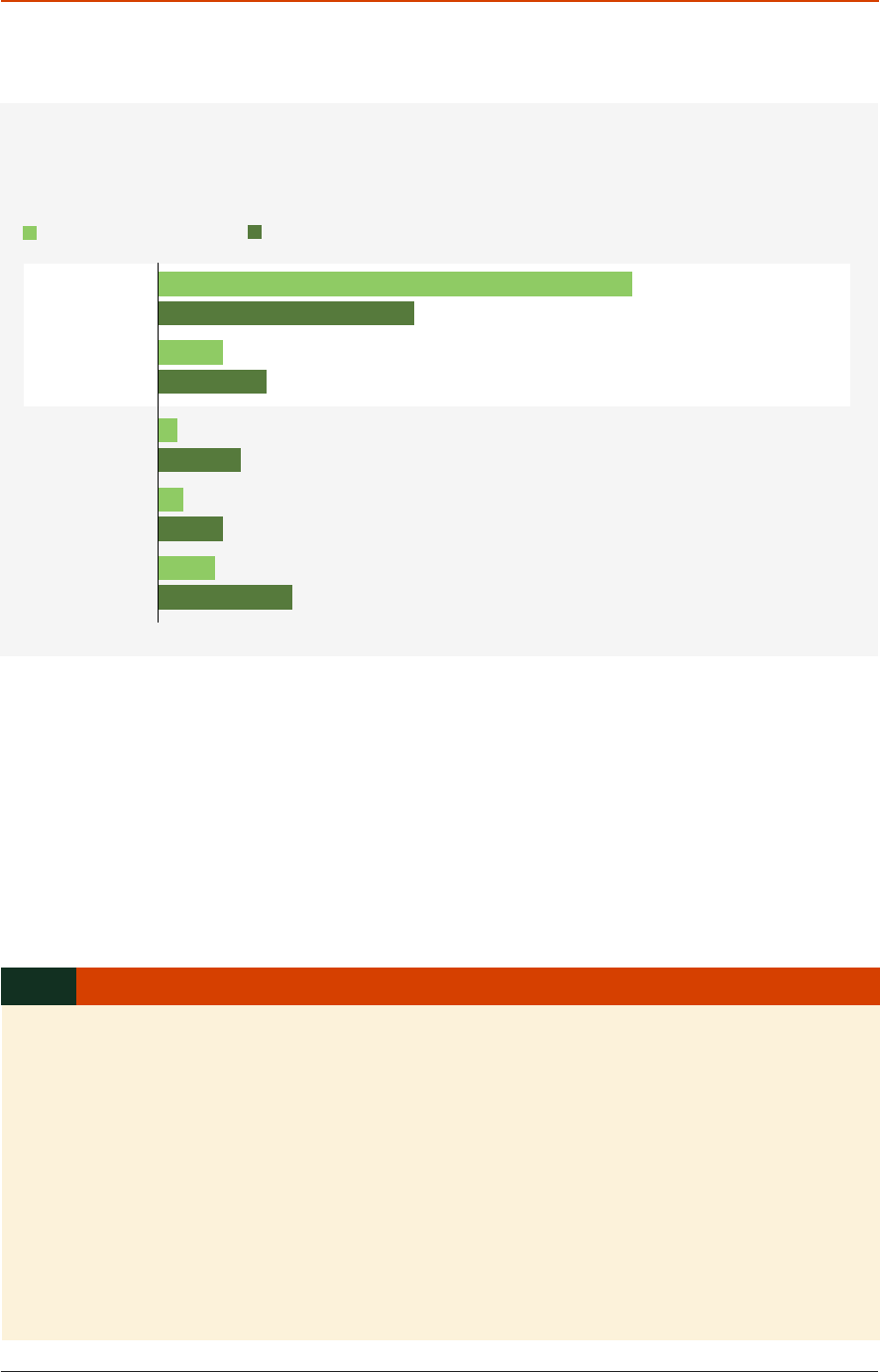
Law Firm Oce Attendance Policies Report 2024 16
© Thomson Reuters 2024
FIGURE 11:
Retention
Highly unlikely
Somewhat
unlikely
Somewhat
likely
Highly likely
Unsure
74%
10%
4%
3%
9%
40%
17%
10%
13%
21%
% of total respondents % of unsatisfied with oce policy respondents
Likelihood to move from the current firm in the next 6 months
Source: Thomson Reuters 2024
This is a significant impact that signals just how much is at stake for firms if they press too hard
with this issue of oce attendance and how valuable the success is that they have managed to
find. It may be tempting for some law firm leaders to view this sort of impact as a potential lever
to influence stang levels without directly laying o professionals, but this would be a mistake.
While it is true that summer associate recruiting was at an 11-year low in 2023,
6
one should
remember that pressure tactics of this type are rather indiscriminate in comparison to employing
more selective hiring practices. Even for firms which may see a short-term financial incentive for
attrition, enacting such policies may make the talent that they want to keep far more exposed to
rival firms oering flexible policies. The best talent is as likely to walk away as the rest.
6 https://reuters.com/legal/litigation/law-firm-summer-associate-recruiting-hits-11-year-low-2023-2024-03-12/
NET unlikely
84% vs. 56%
NET at least unsure
16% vs. 44%
Firms that attempt to reimpose the old dynamic of the five-day oce week in search of
productivity and collaboration gains are vulnerable to losing talent.
In a business environment where low-value work is being automated away, top talent is
likely only to become more valuable. Harsh, inflexible oce requirements open up the
prospect for competing firms to lure away top talent with similar or smaller financial
packages but greatly increased opportunities for work-life balance. Because of the
large-scale adoption of flexible, hybrid work across the industry, outlier firms are now
more strategically vulnerable to hostile talent acquisitions. Firms may want to reconsider
putting themselves in a situation where they are strategically vulnerable to a competitive
advantage adopted by the vast majority of the legal industry.
The TR Institute’s View:

Law Firm Oce Attendance Policies Report 2024 17
© Thomson Reuters 2024
Conclusion
Recent years have been transformative for the legal profession as the industry has evolved
from initial resistance to remote work to acknowledging its advantages and limitations. Lawyers
and law firms seem to have navigated the tumultuous waters of initial biases and evolving
expectations, and finally learned to find a balance.
This reflects a nuanced understanding
that the optimal working arrangement
is not one-size-fits-all but rather a
hybrid model that accommodates the
spectrum of needs and preferences
within the legal profession. While the
journey illuminated areas of disparity —
highlighting moments of dissatisfaction
and unmet expectations, particularly
around mentorship and equitable
engagement — these challenges serve
as vital lessons rather than deterrents. Indeed, they underscore the importance of fostering a
culture in which communication, understanding, and accountability are paramount, and one that
ensures that oce policies are as beneficial in practice as they are in principle.
These lessons have not been without disappointments. Firms which may have sought
large productivity gains by having their workers back in the oce haven’t found them, and
collaboration has not improved compared to the work-from-home era.
These problems, however, have solutions beyond forcing lawyers back into the oce or
attempting more draconian measures which are likely to leave firms strategically vulnerable.
Communication and mentorship issues, in particular, have more accessible solutions, including
those within the realm of oce policy as well as those beyond. Aligning firms’ strategy, vision,
and perhaps most importantly, their compensation system, all to incentivize collaboration will
not be easy. Yet such an alignment is the most likely solution that can provide the long-term
gains firms are seeking.
As we look forward, the overall message of this report is one of optimism and a recognition
of the strides made in adapting to an ever-evolving professional landscape. The successes,
marked by a high degree of satisfaction and a flexible, hybrid approach to oce attendance,
underscore what is perhaps the key development of the past four years. Law firms, once
thought of as immoveable, static institutions, have learned once again how to grow and change
for the better. It’s a trait they will require in order to thrive amid the complexities of upcoming
challenges such as the evolution of GenAI and the increasing presence of alternative legal
service providers.
The current trend indicates a promising, adaptable future for the law firm oce, one in which
a properly designed and implemented oce attendance policy has the potential not to divide
lawyers, but to be the means of uniting them.
These problems... have solutions
beyond forcing lawyers back
into the oce or attempting
more draconian measures
which are likely to leave firms
strategically vulnerable.

© 2024 Thomson Reuters
Thomson Reuters
Thomson Reuters is a leading provider of business information services. Our
products include highly specialized information-enabled software and tools
for legal, tax, accounting and compliance professionals combined with the
world’s most global news service – Reuters.
For more information on Thomson Reuters, visit tr.com and for the latest
world news, reuters.com.
Thomson Reuters Institute
The Thomson Reuters Institute brings together people from across the
legal, corporate, tax& accounting and government communities to ignite
conversation and debate, make sense of the latest events and trends and
provide essential guidance on the opportunities and challenges facing their
world today. As the dedicated thought leadership arm of Thomson Reuters,
our content spans blog commentaries, industry-leading data sets, informed
analyses, interviews with industry leaders, videos, podcasts and world-class
events that deliver keen insight into a dynamic business landscape.
Visit thomsonreuters.com/institute for more details.
